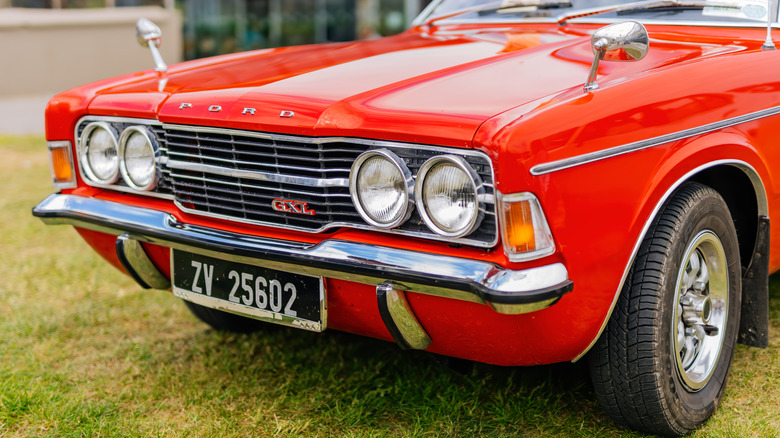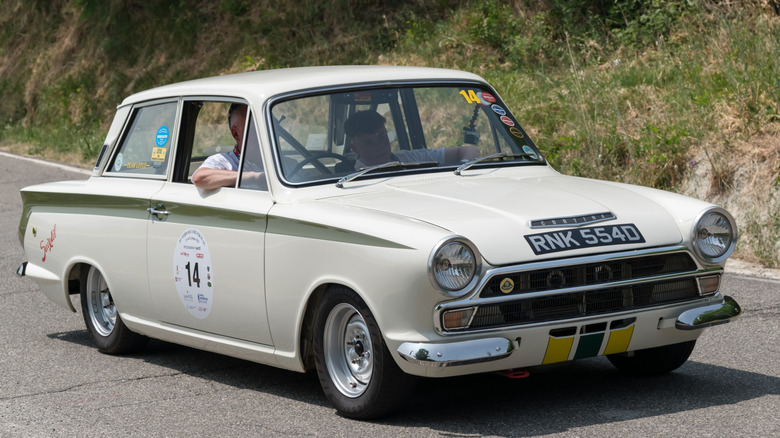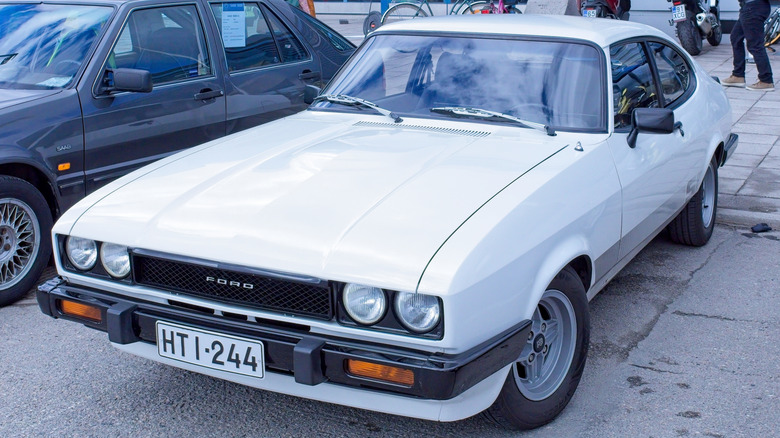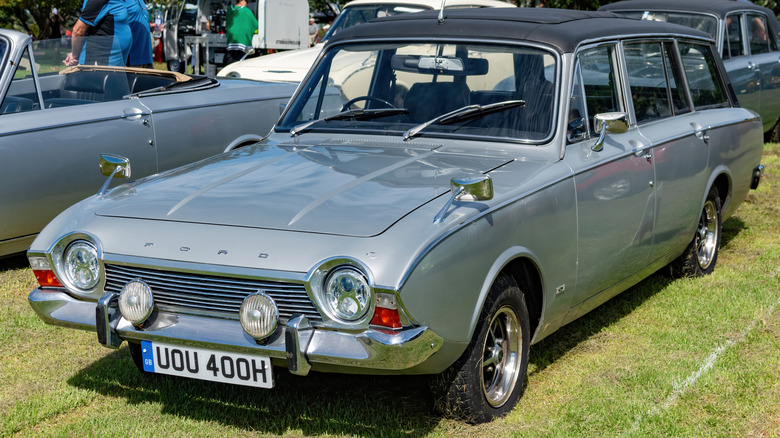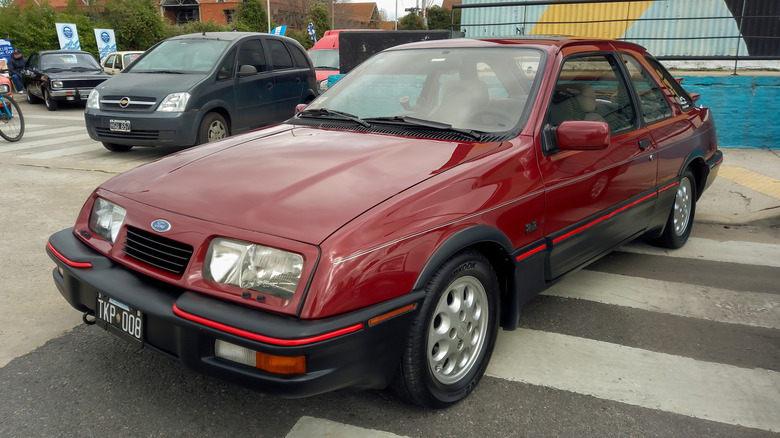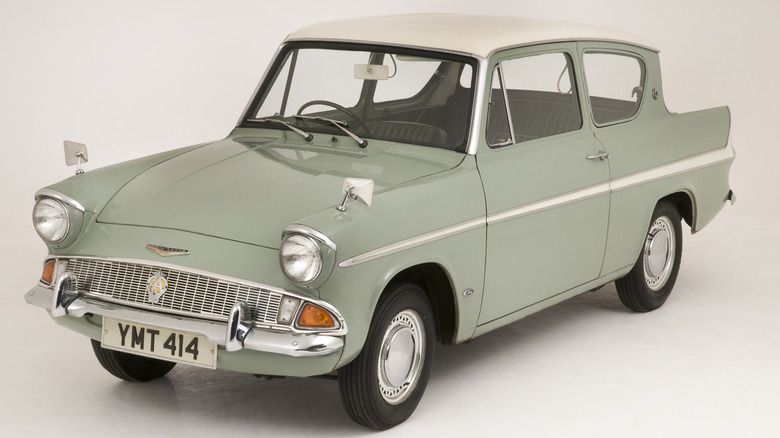5 Ford Models Unique To Europe
Ford is one of the oldest carmakers in the world. It has been making cars since 1896, with the first vehicle having bicycle wheels. The Model T, introduced by Henry Ford in 1908, was Ford's major hit, selling 15 million units before coming out of the production plant for the last time in 1927. However, Ford isn't just Ford. The company used to have multiple brands under its wing, including Aston Martin, Jaguar, Land Rover (now owned by Indian conglomerate Tata Motors), Volvo, Mazda, and others. Fast forward to now, the company has a lineup of models that are not only successful but have also become downright iconic.
Ford wasn't limited to the United States. It expanded to Britain in 1909 and set up the then-biggest car manufacturing plant in the whole of Europe in Dagenham, Essex. Ford of Britain continued to build some of the best-selling vehicles in the U.K. for nearly five decades. While many cars contributed to this wonderful feat, specific models such as the Cortina, Escort, Fiesta, and Transit were major contributors. In 1967, Ford merged Ford of Britain, Ford of Germany, and other European divisions into one, calling it Ford of Europe, with its headquarters remaining in the U.K.
Similar to other countries, Ford also launched several Europe-specific cars that were meant only for the region and not anywhere else. This was to cater to certain needs of European users, and in this guide, we have shortlisted five Ford models that were unique to Europe.
Ford Cortina Lotus
Back in the day, it was quite common for two car giants to come together to produce a product catering to a specific market. For example, Chrysler and Maserati collaborated on the Chrysler TC, while Lotus and Opel joined forces for the Carlton, among several others. The same was the case with the Cortina, which was born when Ford of Britain and racecar maker Lotus joined forces. The Ford Lotus Cortina was showcased at the London Motor Show in 1962. The car took its sweet time and did not launch until the following year. Notably, Ford had the Cortina, but they turned to Lotus for a high-performance version, which was officially known as the Ford Cortina Lotus. Fun fact: almost all of the Cortinas were painted in Ermine White with a sliver of Sherwood Green.
The car came with a Lotus-tuned 1.6-liter twin-cam engine, which gave an output of 105 hp and achieved speeds of more than 100 mph. To differentiate it from the regular Ford Cortina, both companies added Lotus badges and green stripes. Handling and performance were also improved compared to the standard Cortina. The car made heads turn in the world of motorsports and won several championships, including the British Saloon Car Championship. The next-gen version of the Lotus Cortina was launched in 1966, alongside the Ford Cortina. While the engine was the same, the suspension was tuned to make it a more suitable everyday vehicle.
The name Cortina was taken from the Italian ski resort named 'Cortina d'Ampezzo,' site of the 1956 Winter Olympics. The Cortina continued to be in production for 20 years, with the last unit coming out of the plant in 1982.
Ford Capri
In 1969, Ford launched a European alternative to the immensely popular American Mustang, called the Ford Capri, at the Brussels International Motor Show. The Ford Capri was launched with the tagline, "the car you always promised yourself," and it was an instant hit in the European region, selling over 400,000 units in just 2 years.
The first-generation Capri was produced from 1969 to 1974 and came in a four-seat, two-door combination with five engine options: 1300, 1300GT, 1600, 1600GT, and 2000GT. People had the option to go from a standard 1.3-liter and 1.6-liter Kent Crossflow engine, 1.5- and 2.0-liter V4, or a juicy 3.0-liter V6.
The sales were so high that Ford had to summon its factories in Cologne, Germany, and Halewood, Liverpool, U.K., to increase production. The car underwent several revisions and was introduced in 1972 with a 1.6-liter Pinto series engine. After crushing the one million sold milestone, Ford launched the second-generation Capri, which came with large rear windows, improved soundproofing, and optional power steering. There was also a luxury Ghia trim, which included alloy wheels, tinted glass, and a tilt-and-slide sunroof. The second-generation Capri's 3.0-liter engine produced 128 bhp and topped 120 mph.
The entire production moved to Germany in 1976, with Ford introducing the third-generation model just a couple of years after the second-generation. The final version was known as the Capri 280, of which only 1,038 units were produced. Ford ended production of the legendary Capri in 1986. It is now sold in its all-electric SUV avatar only in Europe.
Ford Corsair
Ford of Britain introduced the Consul Corsair, better known as the Corsair, at the London Motor Show in October 1963, and it was the first new model from Ford that started production at the company's Halewood plant. The Corsair was launched with four doors as standard, but there was an option to get the two-door variant; For that, buyers had to put in a special order. Consumers could also choose between standard, Deluxe, and GT models, in which the standard model featured a front bench seat and a four-speed gearbox.
On the other hand, the Deluxe model came with a dual-tone interior, windscreen washers, and a passenger sun visor. Additional features such as individual front seats, a heater, and a floor gear changer were available for an additional upcharge. The Corsair initially used the Kent inline-four engine, producing 60 hp. It was in 1965 that Ford introduced the 1.7-liter V4 engine, which offered 73 hp. Later, the Corsair got the 2.0-liter Essex engine, which pumped 92 hp.
The GT model was replaced with the Corsair 2000E, which offered a top speed of 110 mph. Though the car was peppy, it didn't garner enormous fame, resulting in a limited but solid production run between 1963 and 1970. Bill Boddy of the Motor Sport Magazine rightly said that the Corsair "is a truly lively and enjoyable car in the Ford tradition" and that it "should be a sales-winner."
Ford Sierra
Ford launched the Sierra in 1982 as a replacement for everybody's favorite, the Cortina. Ford invested around $1.2 billion in the Sierra project and expected the sales to skyrocket. However, that was far from reality. Petrol prices doubled during 1973, and there was a need for a more fuel-efficient car than the Cortina. Enter the Sierra, which had a drag coefficient of 0.34, better than Cortina's 0.45, resulting in better fuel efficiency. It was a suitable car for fleet owners, as the car was available in the tried and tested Pinto (1.3-liter, 1.6-liter, and 2.0-liter) four-cylinder and Cologne V6 (2.0-liter, 2.3-liter, and 2.8-liter) engine options.
Ford also offered two distinct dashboard options, depending on the trim level. Notably, the dashboard layout was inspired by BMW and Saab, and was ergonomically designed. It included a Fischer C-Box cassette storage system, four-way joystick fader control, an integrated low fluid level and brake pad wear warning display system, and stylized door panels. Despite the high praise from the car community during its release, the Sierra would not achieve the status of a favorite.
In fact, people were so in love with the Cortina that back in the day, dealers stockpiled the Cortina and sold them at a pretty solid discount. Over 11,000 Cortinas were sold in 1983, which significantly impacted the Sierra's sales figures. After 11 years, the Sierra ceased production in 1993, making way for the Ford Mondeo.
Ford Anglia 105E
Famously known as the Harry Potter car, the Ford Anglia was a beloved family vehicle in the U.K. Ford introduced the Anglia back in 1939 as a budget car powered by a 933 cc engine. To replace its saloon car, the Anglia and Prefect 100E series, Ford launched the updated Anglia 105E series in the U.K. in September 1959. It featured an eye-catching slanted rear window with modest tail fins, hooded headlights, and was powered by a 997 cc Kent engine that reached a top speed of 75 mph despite producing just 39 hp. From the front, the 105E looked similar to the 1957 Ford Thunderbird.
In 1962, the Ford Anglia 105E created history by setting six Guinness World Records for a car under 1,000 cc. Drivers Tony and Michael Brookes and their race team achieved an average speed of 83 mph for seven consecutive days and nights at an endurance event outside of Paris.
Ford offered the Anglia in Standard and Deluxe variants. For an extra £21 on top of the £589 cost of the Standard model, users could get the glovebox lid, passenger sun visor, carpets, chrome side stripes, rear lights with chrome accents, and other aesthetic doo-dads that increased the appeal of the plucky little vehicle.
The Ford Anglia 105E was a small family car that could fit four adults. Over the years, the Anglia saw multiple new models such as the 106E, 123E, 124E, 307E, and others. It was produced until 1967, and cemented its iconic status when the Ford Anglia 105E Deluxe variant crashed into the Whomping Willow in "Harry Potter and the Chamber of Secrets".
